Garden roses: reproduction, planting, cultivation and care
The rose has been revered for many thousands of years. And it's not for nothing that they call her the "queen of flowers". After all, its appearance is so beautiful that no one flower can compare with such beauty. It can also be called the "flower of love", because it is customary to use it to tell all your feelings.
Content:
- A little about the history of garden roses
- Saplings of garden roses
- Secrets of planting garden roses
- Garden rose care
- How garden roses reproduce
- Fertilizers
- Diseases of garden roses
A little about the history of garden roses
the Rose garden is a rather finicky plant of the Rosehip family, most of the roses are obtained as a result of the painstaking work of breeders. In nature, it is almost impossible to find a garden rose, since without proper care this plant degenerates and, according to external signs, again begins to approach its wild ancestor. Today, the rose has become quite an ordinary flower that can be easily grown in the garden.
The history of this noble plant dates back to the Roman Empire, but the secret of its cultivation was brought from Ancient Greece.
The Romans at one time already knew about 10 varieties of roses, which served as decoration not only in the gardens of noble people, but also covered the heads of famous women. With the collapse of the Roman Empire, the science of flower cultivation came under the jurisdiction of the monastic brethren, who were ordered to grow roses along with medicinal plants.
By the end of the 17th century, Europe already knew 21 varieties of this beautiful flower, which all rich people wished to possess, but this became possible only two centuries later, when the cultivation of roses became a common thing, and the secret of the origin of many species was revealed.
Saplings of garden roses
A correctly chosen seedling for planting is a guarantee that the purchased plant will nevertheless take root in the garden area and will delight you with the first green leaves in early spring. Modern flower shops offer two types of plants for planting:
- Own-rooted.
- Vaccinated.
It will not be possible to determine externally which plant the seller is offering, it is better to ask about it in advance. It should be remembered that in areas with harsh weather conditions and frosty winters, self-rooted roses are less likely to take root, and grafted ones feel good even in the most unfavorable conditions. Grafted roses they get sick less and, accordingly, the number of bushes that can survive the winter will be an order of magnitude higher.
When buying, special attention should be paid to the appearance of the plant. Dried leaves, cracks in the trunk, broken buds, damaged roots are a sure sign that the plant will not accept.
In this case, you should not go to the seller's persuasion, no stories about "delicious plants" grown from these very cuttings should not mislead the buyer. The product should only be of high quality, it depends first of all on how much time the gardener will have to devote to the plant.
The number of young shoots on one cutting should not be less than three, the splendor and beauty of the future rose bush depends on this number.
Small shoots are a sign that the plant will grow small.It is best to buy a rose bush in a container with peat, so that, without violating the integrity of the root system, plant it directly into the prepared soil.
Secrets of planting garden roses
Roses are sunshine lovers, no plant in the garden loves the warmth of the sun's rays as much as a rose bush.
Therefore, when disembarking, you should be guided by the following rules:
- Roses are usually bought in late autumn or early spring, that is, during the most volatile period of time.
- Since young bushes are very fond of warmth, one should not rush to planting in cold soil.
- If possible, the purchased seedlings are sprinkled with earth in a greenhouse, or placed in a cellar, providing comfortable conditions under which the temperature should not be less than zero degrees.
- The place where the rose is supposed to be planted should be warm, protected from wind and direct sunlight. It is necessary to find a "golden mean" between absolute light, which can damage the plant, and shade, which causes bouts of uncontrolled growth in roses, and as a result, an increase in the number of pests and a gradual wilting of the bush.
- Growth bushes are best placed near trees, so that the shadow from them falls on the rose only at certain hours. Such a neighborhood will also serve as a natural protection of the rose from gusts of strong winds and drafts.
- The trees next to which the rose is planted should not be too large, since the huge roots require high soil moisture, which can cause the rose to die, or the tree itself will begin to take the moisture intended for the bush, which will also lead to death. The ideal planting site is the South-Eastern part of the garden, but only in those places where the rose will not be harmed by close proximity to other plants.
Rose is a flower that can grow in any "company", it feels equally good among other varieties, and even surrounded by completely different plants. The most common companions of roses are sage, bell and foxglove. These plants begin to bloom actively after the rose itself fades, and therefore in no way detract from its external charm.
Roses can also be planted in a circle of annual plants, which you can pick up according to your own taste. Any rules regarding planting a rose bush does not exist, every gardener decides for himself whether he wants to decorate the garden of roses with some more flowers, or whether he will leave room exclusively for the queen of all flowers.
Garden rose care
- Roses love moisture, but not too much moisture.
- Water the bushes best of all in the early morning, or in the evening, then the plant has enough moisture for the rest of the day.
- Too intense watering can cause the appearance of powdery mildew, which will not be easy to get rid of, many plants will have time to die before the disease can be defeated.
- The bushes should be trimmed regularly. This can be done at any time, except in winter.
- In the process of "cutting" the rose is cleared of old dried twigs and wild shoots. This should be done, stepping back 5 centimeters from the "living" part of the plant. The gardener will see beneficial changes in the appearance of the rose in a few days. The rose will acquire a noble appearance, become stronger, and outwardly will look more attractive.
- Roses love to be regularly sprayed, do not forget about it.
- In summer, the roots of roses should be covered with grass, they are extremely sensitive to overheating. In winter, the roots will have to be wrapped in warm things, or try to ensure that the maximum snow cover always remains above the bushes.
- You can also insulate the bushes with sawdust, humus and spruce branches.
How garden roses reproduce
Roses multiply cuttings.
- Young shoots are cut from the already fading bushes in the month of July.
- At the same time, a branch with three branches is cut off, which also need to be slightly trimmed.
- The cut must be oblique.
- The stalk is planted in the soil without any special preparations, covered with a jar and remains in this form until winter.
- With the onset of frost, the cutting is covered with sawdust, or any other means at hand.
- In the spring, the jar can be removed and planted in the flower garden, while trying to monitor the emerging signs of flowering.
- The plant should not bloom in the first year after planting, this will deprive it of strength and prevent it from becoming a beautiful large bush in the future.
Fertilizers
When planting roses in open ground, you need to be prepared for the fact that the plants will require a large amount of fertilizer, which will have to be applied to the soil regularly.
There are the following types of fertilizers:
- Horse manure is the best and most effective way to stimulate the growth and flowering of any kind of rose bushes. The manure is mixed with the ground and in this form is placed under the bushes. It is important to remember that only rotted manure can be used, fresh roses can only harm, as well as any other type of manure.
- Chicken manure cannot be used as a fertilizer; it can cause quite serious damage to the root system, cause burns and even complete destruction of the roots.
- Calcium nitrate, diluted in the amount of one tablespoon per bucket of water, will support the rose during flowering, for a long time, preventing the buds from crumbling and fading.
- Infusion of mullein in conjunction with mineral fertilizers will help the rose to "transfer" the flowering time without losing its appearance.
Regardless of the type and amount of fertilizer applied under the bush, some precautions should be taken, among which the most popular is abundant watering plants... Wet soil will soften the effects of manure and saltpeter, even if the required proportions are not met.
Diseases of garden roses
Roses often get sick, so there is no reason to hope that a rose planted in the garden personally will not be too special.
The most common diseases are:
- false spotted dew
- leaf septoria
- cercosporiasis of leaves
- black spot
- purple spot
- rust
- powdery mildew
- gray rot
All of the above diseases, except for the last one, affect exclusively the leaves and stems of the plant, while gray rot affects the roots. The causative agents of the disease are fungi of various kinds, it is almost impossible to fight them. The disease spreads at an incredible rate, quickly adapting to various treatments. No chemicals will save you here.
Alternatively, you can try to spray the plant with a copper-soap solution, but you shouldn't really hope for the result. If the disease has not yet managed to capture the entire plant, you can try to cut off the affected areas, but in the case of gray rot, the entire plant will have to be removed.
Experts recommend not to cure, but to prevent the disease, for which there are methods such as fumigation and the introduction of strong-smelling natural ingredients into the soil, for example, a mixture of garlic and onions.
But even this will not be able to protect the plant from infection. Growing roses is still hard work as in the old days, which is why roses are so highly prized compared to other flowers.
Before purchasing a beautiful rose bush, every gardener, be it an amateur or a professional, should ask himself if he is ready to spend half of his free time in the garden pinching, pruning, feeding, watering, spraying and covering only one flower - a rose.
You will learn more information on how to plant a rose correctly from the video.



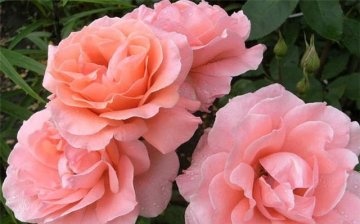
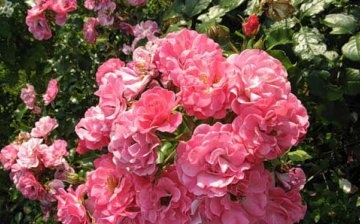

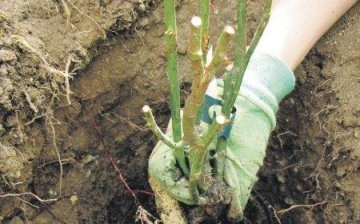
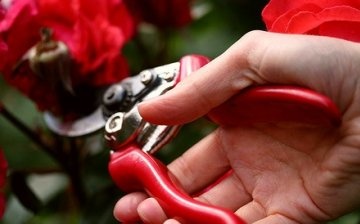
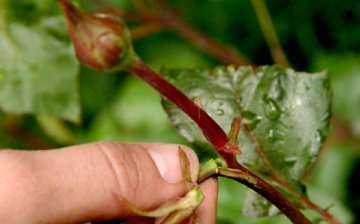
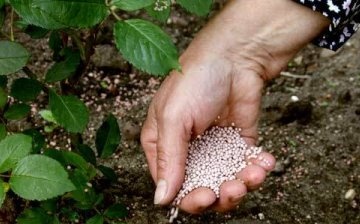










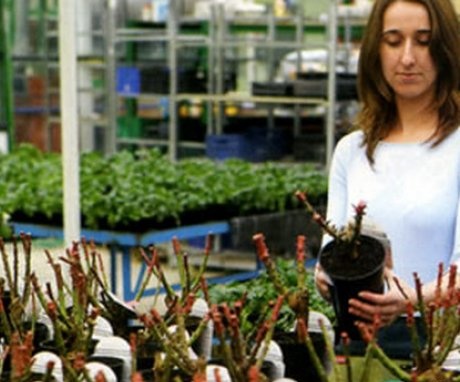
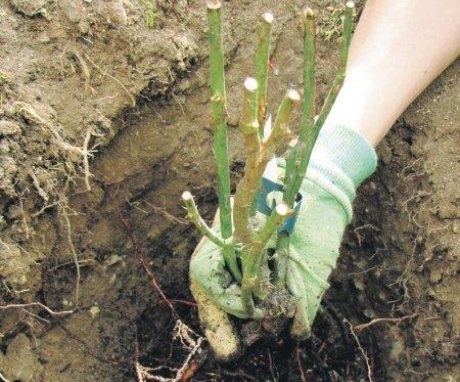

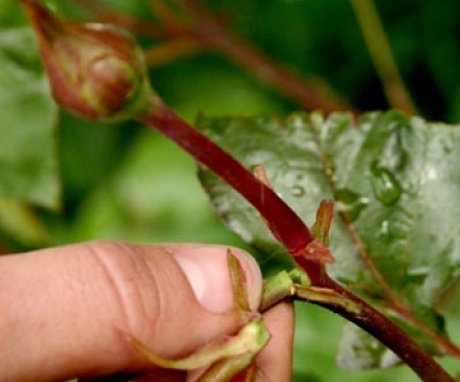
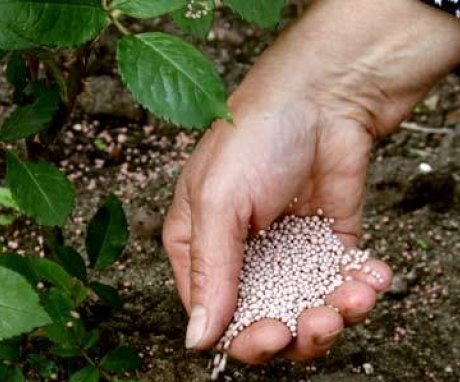
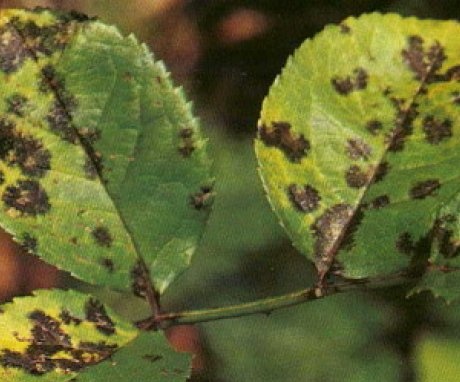
The main thing for a garden rose of the first year of planting is to survive the winter. Out of 4 bushes, only 1 survived, although everything was insulated very well. I don't want to dig them up every time for the winter, but roses are capricious flowers.
To grow a garden rose, a rose hip is first planted and a cultivated bud is grafted to it, after it is accepted. In our country, almost all roses were accepted, and in winter not a single one ever froze.